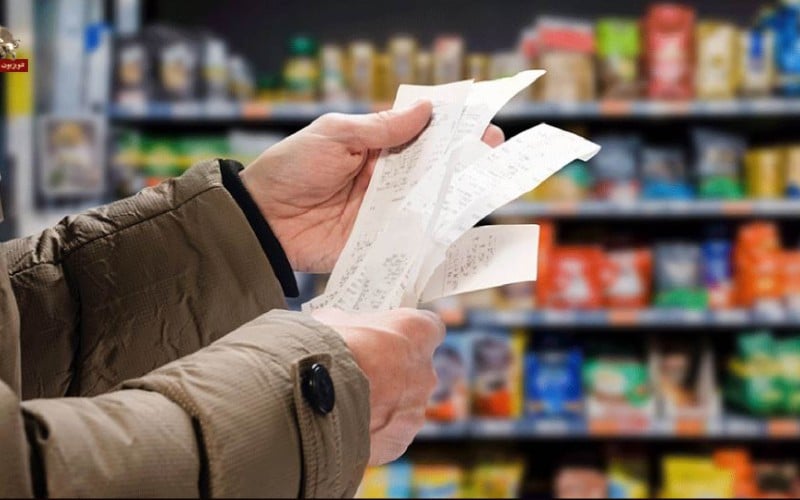Iran’s structural failures push regime to rely on armed forces as poverty and hunger surge
As Iran’s political and economic crises intensify, the regime’s Supreme Leader Ali Khamenei has desperately instructed the government of Masoud Pezeshkian to guarantee food security for the population. The order underscores not only the severity of the crisis but also the structural incapacity of the regime to manage resources.
In response, Mohammad Reza Aref, regime’s first vice president, turned to the military rather than pursuing structural reforms or confronting the entrenched economic mafias that dominate the country’s wealth. Aref appealed to Etka Organization, the economic arm of Iran’s armed forces, to participate in food supply and storage. This move effectively places responsibility for public sustenance in the hands of the military, equating food security with national defense — a sign of paralysis in governance.
Speaking at the inauguration of Etka’s new development projects, Aref cited Khamenei’s recent meeting with the cabinet, admitting the government alone cannot provide food security. He stated: “Although the government has a duty to support the armed forces, the livelihood and economic issues of the people are of fundamental importance.” His remarks reflect the regime’s long-standing priority: allocating vast budgets to military institutions while neglecting basic needs.
The regime’s Defense Minister Aziz Nasirzadeh confirmed the policy shift, asserting that the Defense Ministry must play a role in food security. Far from breaking the monopoly on food imports, this decision transfers control to the military — an institution synonymous with repression and intervention rather than economic management.
Collapse of Agriculture and Food Systems
The move comes against the backdrop of a worsening food crisis pushing Iran toward collapse. Natural resources such as water, fertile soil, and arable land have been severely degraded. Drying wetlands, land subsidence, and falling water tables have devastated agriculture. Millions are losing access to animal protein.
The UN Food and Agriculture Organization (FAO) reports that industrial livestock farming — requiring over 15,000 liters of water to produce one kilogram of beef — is unsustainable in Iran, where per capita water availability has fallen to less than one-third of the global average. This model not only depletes resources but also contributes 14.5% of global greenhouse gas emissions, more than the entire transport sector. In drought-stricken Iran, the results are catastrophic. Malnutrition is rising, and processed red meat — deemed carcinogenic by the World Health Organization — remains a staple for many who lack healthier alternatives.
Stark Admissions from Regime Officials
Official statistics confirm the depth of the crisis. Ali Agha Mohammadi, a senior member of the Expediency Council and close confidant of Khamenei, admitted that nearly 20 million Iranians — about one-quarter of the population — lack access to basic needs, including housing, employment, education, healthcare, and food. He revealed the existence of 2,020 deprived neighborhoods and 874,000 school dropouts, bluntly adding: “Those who act in the name of religion have destroyed everything.”
Meanwhile, parliamentary research shows poverty rates remain above 30%. Poverty climbed from below 30% in 2022 to above 30% in 2023 and 2024, with a widening poverty gap index of 0.28, making it harder for citizens to escape destitution. Despite official claims of 4.5% economic growth, real incomes have declined, and half the population consumes fewer than the daily standard of 2,100 calories.
Inflation and Escalating Food Costs
Regime-affiliated economist Hossein Raghfar predicts inflation could reach 60% or higher next year, far above the government’s 40% estimate. He identifies currency policies aimed at covering budget deficits — not workers’ wages — as the key driver. With wages representing only 10% of production costs, blaming labor is baseless, he argues.
At the same time, official statistics from the Statistical Center of Iran and the Institute of Nutrition show that the minimum monthly food basket cost reached 11.5 million tomans in August 2025, exceeding the minimum wage of 10.39 million tomans. Key components include:
Dairy: 3.5 million tomans
Meat: 1.85 million tomans
Rice: 640,000 tomans
Fruits: 1.77 million tomans
The basket rose 4.18% month-on-month and 56% year-on-year, putting even basic nutrition beyond reach for millions.
Military Reliance Exposes Regime’s Failure
Entrusting food security to the military is more than a short-term measure — it is a stark admission of failure. Instead of dismantling entrenched mafias, reforming economic structures, or improving international relations to ease shortages, Khamenei has once again turned to his repressive apparatus.
By militarizing food supply, the regime cannot conceal the depth of the crisis. Iran’s degraded resources, widespread hunger, and deepening poverty mark a nation on the brink of collapse. The regime’s desperate decisions only accelerate the downward spiral.


Dining and Cooking